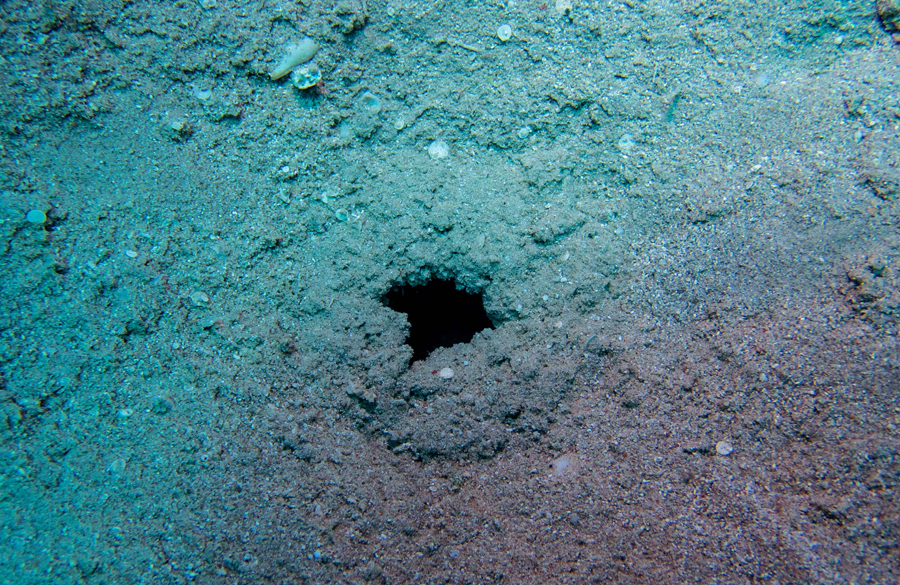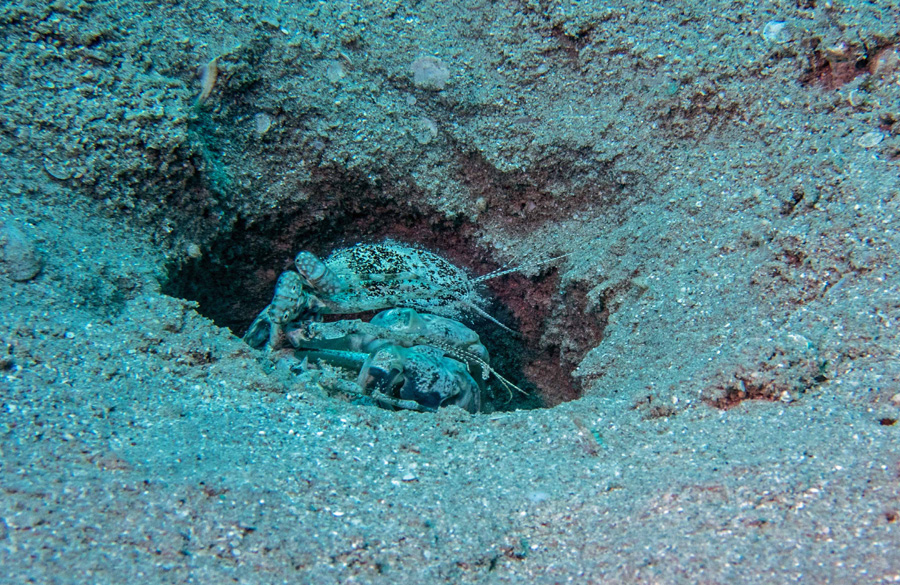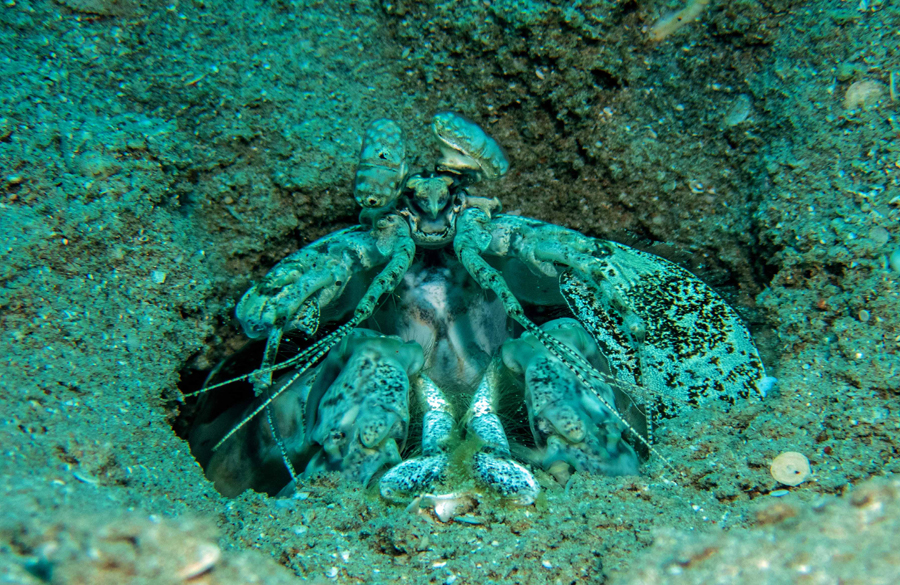MANTIS SHRIMP / STOMATOPODA
Crabs are very shy, hiding during the day because most are active at night. One of the main reasons why they are very rarely seen.
It is all the more pleasing to be able to accompany and watch a mantis shrimp over months. Not in the aquarium, but in our bay in Sahl Hasheesh.
This is what happened with the mantis shrimp.
We noticed in 10 m depth an unusual small shoal in the sand field, with a hole of about 8 -10 cm and a strange edge.
As it turned out, the home of a mantis shrimp.This type of crab digs a branched passage system in the sand where they stay protected until they go hunting at night.
Luckily for us, our mantis shrimp also shows up from time to time during the day.

It does not leave its protective dwelling but comes out of its hole only so far to visually inspect its surroundings.
Here it is to be recognized clearly with his telescope similar eyes.
The visual performance of mantis shrimps is highly developed. Their eye is divided into three parts in order to simultaneously capture the optical impressions on three different levels and thus process them into a whole. As a result, the pupils in the eye constantly move back and forth. This is a unique form of visual perception in the animal species.

What we could also watch is that when he retreats into his housing, he uses his tentacles to work and shape the sand around his hole so that there is a protective edge around the entrance.

During my research I found a lot of material about what exactly our mantis shrimp is. So I now know that there are over 400 species.
Divided into the two groups Smasher and Spears. This because of their different way of attacking and killing their victims.
The spear stabs and the smasher slays its victims.
Based on comparable pictures and descriptions I suspect that our mantis shrimp is the Lysiosquilla scabricauda.
This is because according to the description in the seawater encyclopedia the Red Sea is not listed as habitat. Fact in any case is that it is a mantis shrimp.
Photos: Johann Vifian
Sources: https://www.meerwasser-lexikon.de/tiere/9291_Lysiosquilla_scabricauda.htm1
https://www.biologie-seite.de/Biologie/Lysiosquilla_scabricauda
